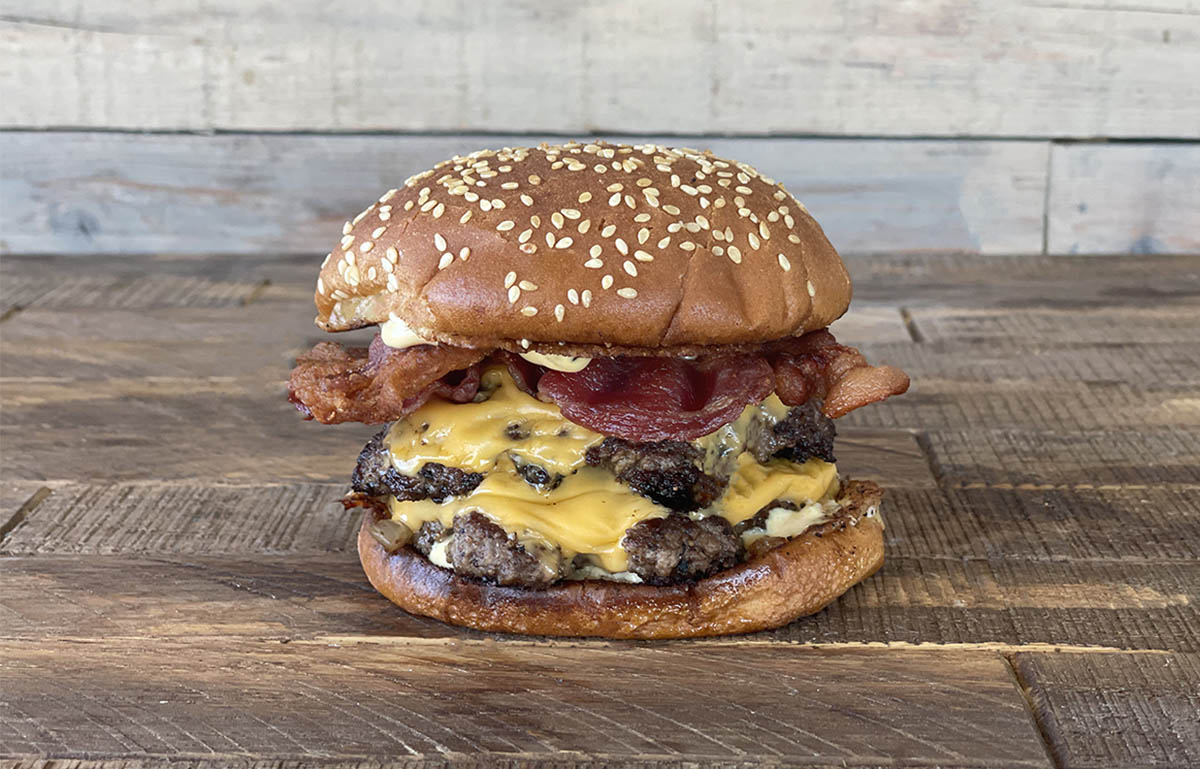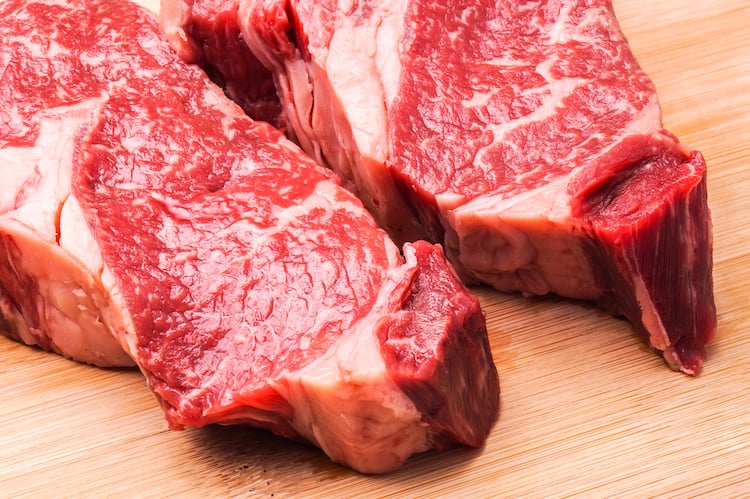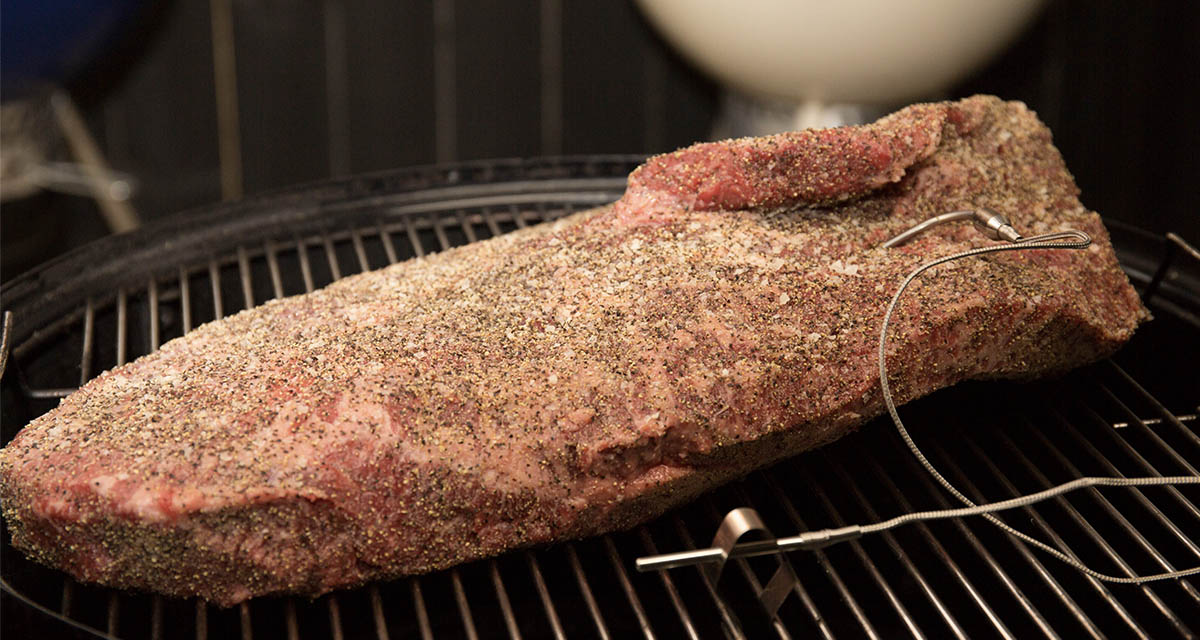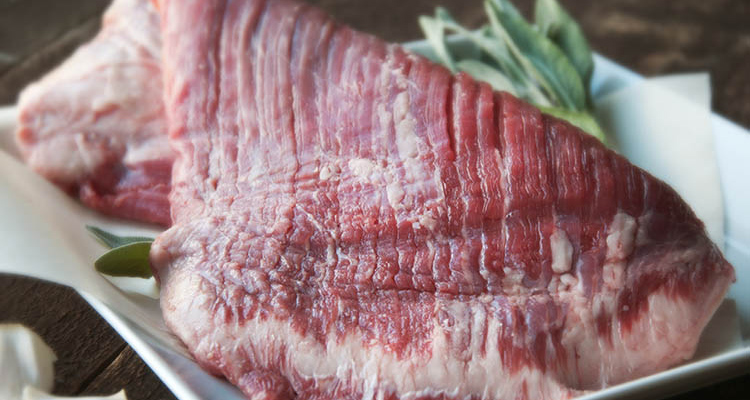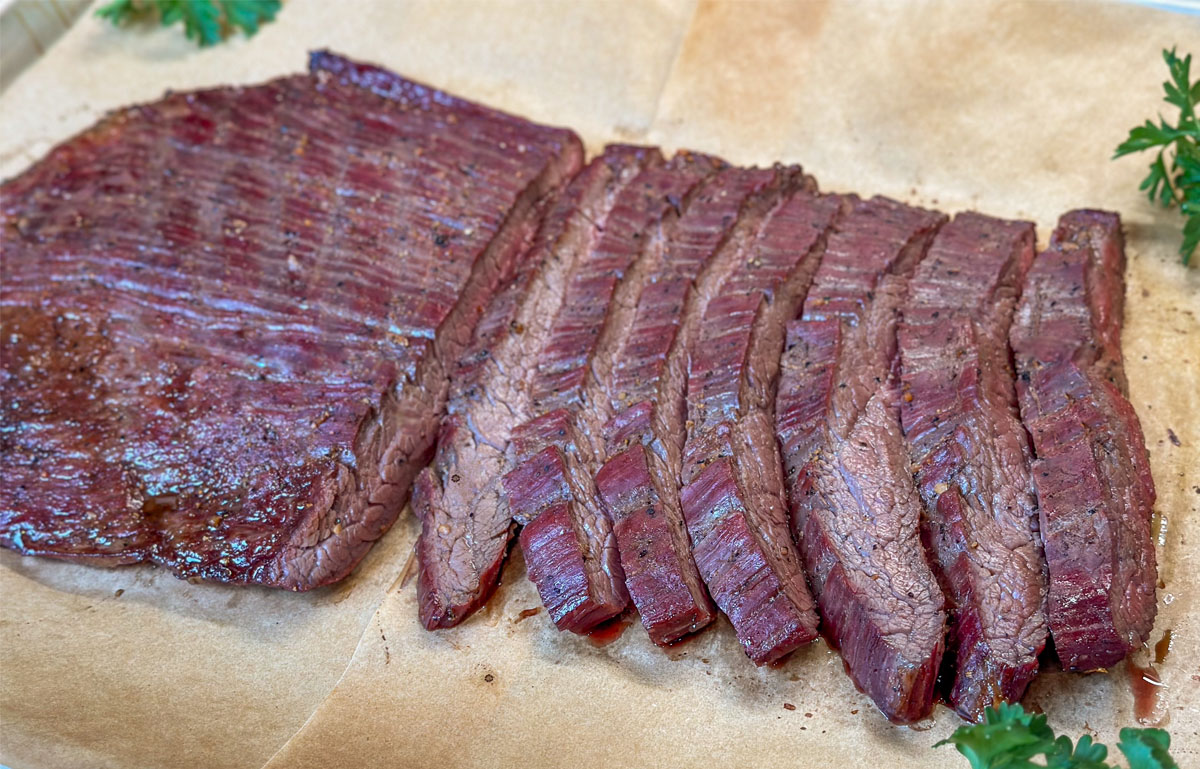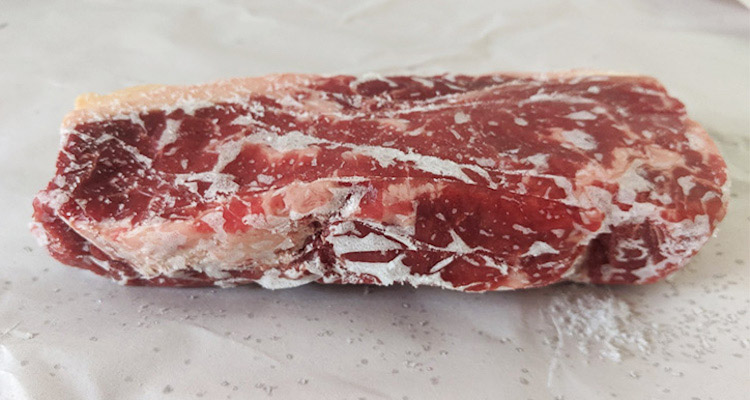10 Best Steaks for Grilling (With Recipes)
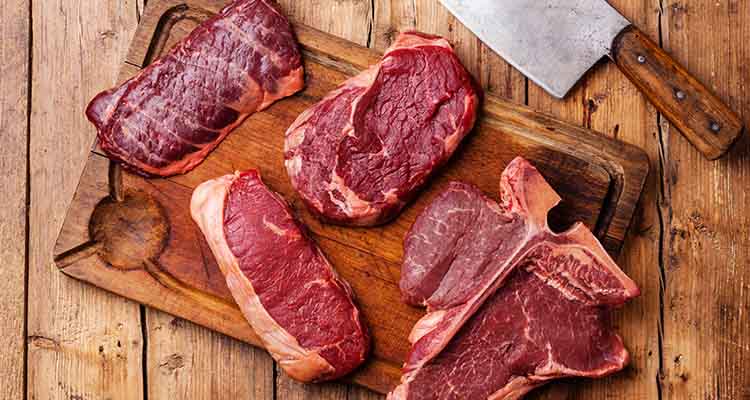
Don’t limit yourself to the same old ribeye and striploin steaks over and over.
We’ve picked our top 10 favorite steaks to grill. You’ll find all the typical steakhouse classics, and we’ve thrown in some specialist butcher cuts you should definitely try with recipes and tips to help you grill the perfect steak.
The best steaks to grill
Here are the best steaks to grill, from the butcher’s secret value for money cuts to the most expensive steak house favorites.
1) Ribeye Steak
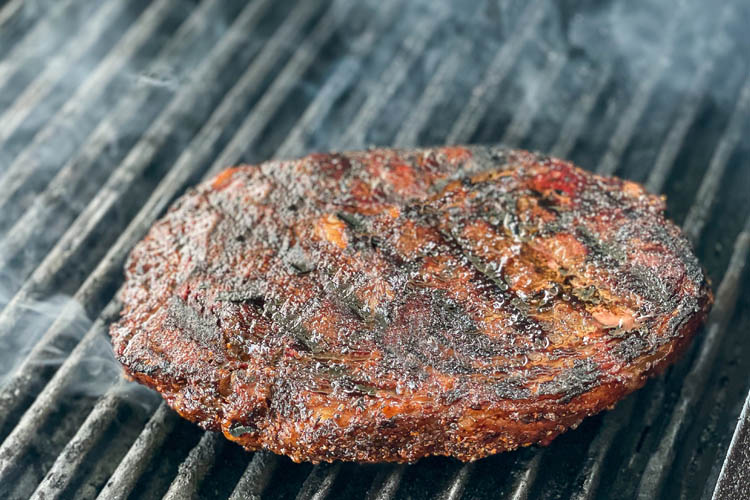
Considered by many to be the king of all steaks, the ribeye is known to be tender, juicy, and well-marbled. There’s no wonder why the ribeye is used by the Steak Cookoff Association for their competitions.
You can buy a bone-in or boneless ribeye steak, and you might find it called something else. Entrecôte (in France), bone-in Tomahawk Steak, bone-in Cowboy Steak, and Scotch fillet are ribeyes butchered differently. Always look for cuts with streaky marbling through the middle.
Fun fact: The USDA grading system uses the ribeye to grade the entire carcass.
Where it comes from
You’d be correct if you assumed the ribeye came from a steer’s rib section—the upper rib primal area between the 6th and 12th rib, to be exact.
There are two parts: the spinalis dorsi for the ribeye cap and the longissimus dorsi muscle for the ribeye. The latter is an infrequently used muscle, which is good news for us because it means it’s extra tender.
How to grill it
The ribeye’s higher fat content makes it the perfect steak for grilling. Because the fat keeps the muscle fibers moist while cooking, you don’t have to stress about drying it out compared to other cuts.
For this grilled ribeye cap steak recipe, we just use a little salt and pepper to enhance the naturally rich beef flavor. But if you want to get fancy, try this coffee-crusted ribeye recipe.
Either way, we recommend using the reserve sear method for best results.
2) Strip Steak (a.k.a. New York Strip)
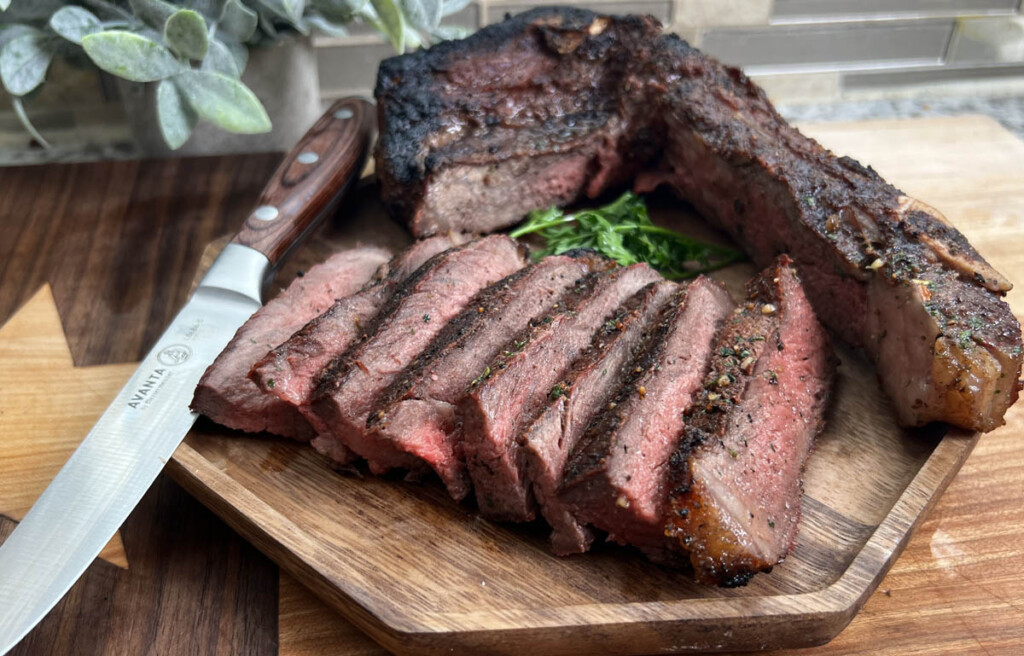
Strip steak is also known as a New York Strip, Kansas City Strip, strip loin steak, or Ambassador Steak. No matter what it’s called, it’s a classic cut popular in steakhouses worldwide.
A strip steak has a pronounced beefy flavor and a tighter texture than the ribeye. It has medium marbling and a fat cap around its side. With less fat than a ribeye, it’s a leaner cut that’s more similar to a filet mignon.
Strip steaks come in both bone-in and boneless varieties.
Where it comes from
Strip steak comes from the loin primal section, below the backbone and behind the ribs. Tenderloins (like the aforementioned filet mignon) are also cut from this section.
How to grill it
Our preferred way of grilling strip steak is over hot charcoals with a simple salt and pepper seasoning. Compared to the ribeye, it’s less prone to flare-ups, so cook it hot and fast over direct heat.
We recommend cooking it to medium rare or medium to prevent the center from drying out.
3) Porterhouse Steak
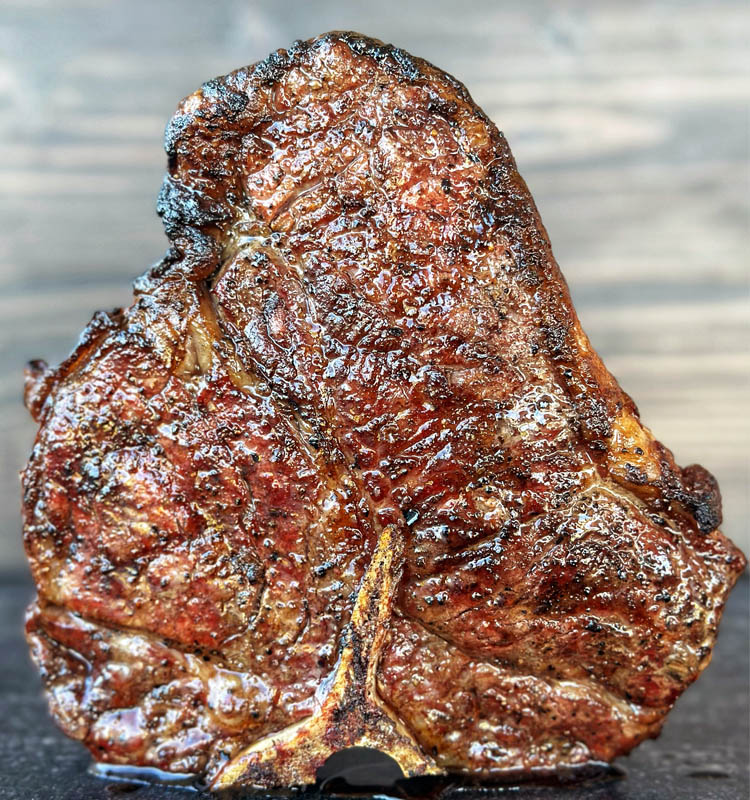
You’ve probably heard of the famous porterhouse steak. This is one of the best steak cuts for grilling because it’s actually two steaks in one? It’s a filet mignon and a strip steak separated by a T-shaped bone.
So you get the best of both worlds – the filet’s tenderness with the strip steak’s flavor.
A porterhouse steak is the perfect cut for sharing, and many steakhouses market it as such. But if you’ve got a big appetite, go for it solo!
A similar cut is the T-bone steak, which includes a smaller portion of filet.
Where it comes from
Porterhouse is cut from where the top loin meets the tenderloin behind a steer’s ribs. There’s no official distinction between porterhouse and T-bone steaks.
But porterhouses are cut from the short loin’s rear, while T-bones are cut from the front. So a porterhouse has more tenderloin/filet mignon, and a T-bone has more strip steak.
How to grill it
Our grilled porterhouse steak recipe recommends either traditional or reverse searing, depending on the steak’s thickness. If it’s less than an inch thick, go traditional.
We add some kosher salt before grilling it and then serve it with compound butter to take it to the next level.
4) Filet Mignon
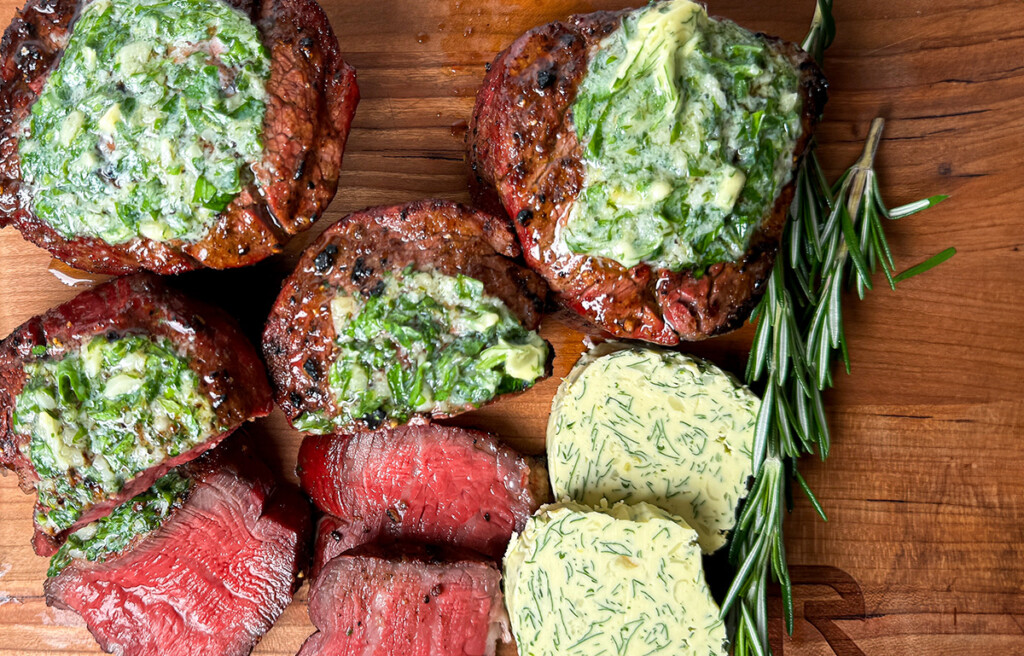
Filet mignon comes from the tenderloin, a.k.a. the most tender cut of meat. It may have a milder flavor than a strip steak and less fat than a ribeye, but the buttery-smooth tenderness makes up for this.
The catch is you’re going to pay for this melt-in-your-mouth texture. Because of these two traits, filet mignon is arguably one of the most expensive cuts of beef
Where it comes from
Filet mignon is cut from the narrower end and thickest part of a tenderloin roast. The tenderloin is a muscle section in the loin primal area below the cow’s backbone. It isn’t used often during a steer’s life, which equals an extremely tender texture.
How to grill Filet Mignon
To make the most of the filet mignon’s tenderness, we recommend the reverse sear. We like to buy a whole tenderloin and break it down ourselves to save a little money.
Because it lacks a ribeye’s marbling and a strip steak’s fat cap, a filet mignon is often served with added fats. Personally, I like adding half a tablespoon of compound butter on top while it rests for 15 minutes before serving.
5) Rump Cap (Picanha)
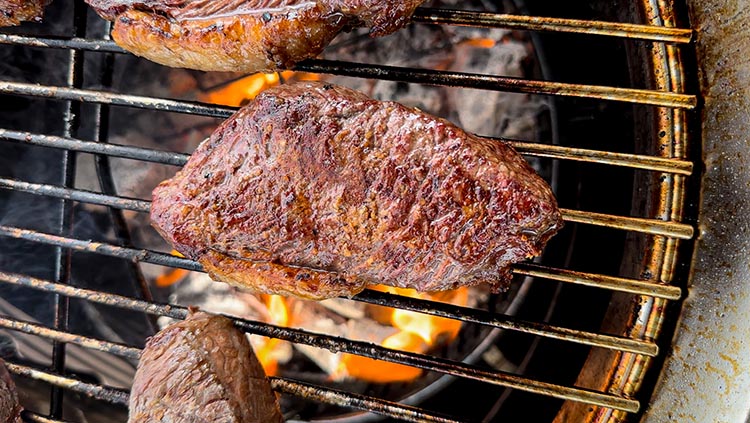
Picanha has been the most popular beef cut in Brazillian steakhouses for decades. So it was about time this cut made its way onto other grills worldwide.
In the US, it’s typically called a rump cap, top sirloin cap, or coulotte. It can be a little hard to find, but when you do, you’ll find an inexpensive beef cut that’s tender, juicy, and flavorful. This is primarily thanks to the thick fat cap, which both protects the meat while grilling and adds flavor.
If you combine sirloin’s texture with filet mignon’s tenderness and ribeye’s taste, you get picanha. Doesn’t sound too bad, does it?
Where it comes from
The rump cap comes from the round primal section. It’s a lean, triangular cut sitting on top of a cow’s rump.
How to cook rump cap or picanha
There are many ways to prepare picanha, including following its traditional Brazillian routes. One of our preferred ways is to slice the rump cap into steaks and grill them over charcoal before serving them with a drizzle of chimichurri sauce.
Here’s our recipe for grilled rump cap steaks. You want to keep the seasoning simple with coarse sea salt and add the authentic chimichurri sauce on top.
You can also keep it whole, like in our smoked picanha recipe.
6) Top Sirloin Steak
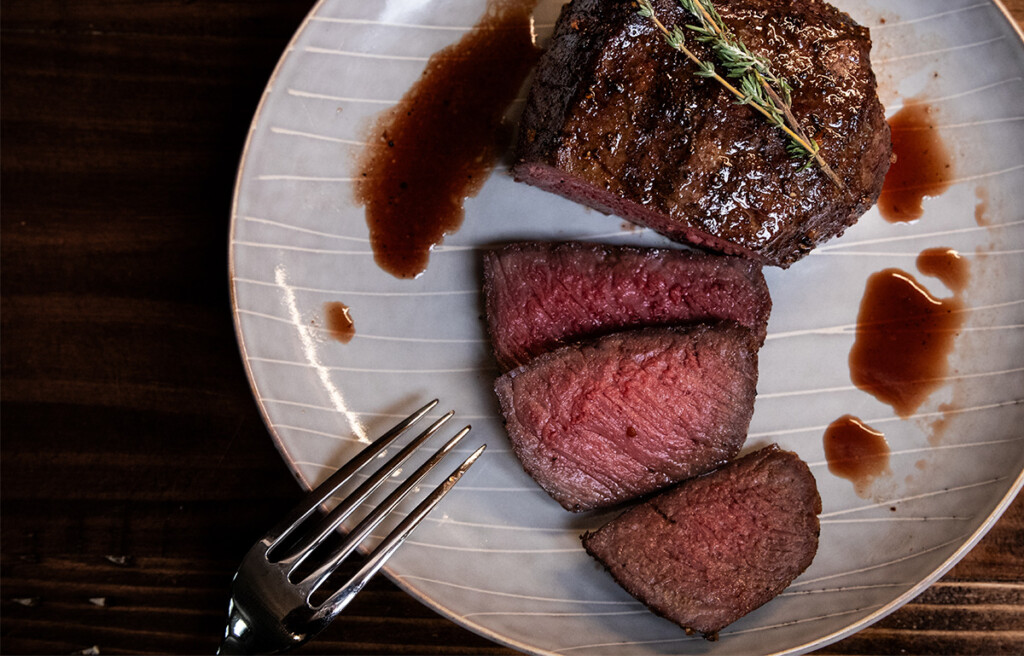
There’s a lot to love about top sirloin steak. The flavorful cut is highly versatile, even in shape and size, and also relatively inexpensive.
It’s one of the best steak cuts for grilling because it’s lean yet thick, so it stays nice and juicy. It might not be as tender as some counterparts, like the ribeye, but we think its versatility, rich flavor, and price make up for it.
Where it comes from
It comes from the sirloin primal, divided into top and bottom sections. You’ll find this between the butt and the rump underneath the tenderloin.
Most sirloin steaks come from the top, while cuts like tri-tip steaks come from the bottom sirloin. Top sirloin is considered a premium steak because it’s sold with the bone and bottom round muscles removed.
How to grill it
The top sirloin is wonderfully versatile. We recommend keeping it simple and grilling it to medium rare. You don’t want to go past medium because it’s a leaner cut with less marbling.
We use the reverse sear method for our grilled top sirloin steak recipe. We also add our Smoke Kitchen Beef Rub and finish it with a pad of butter.
7) Flat Iron Steak
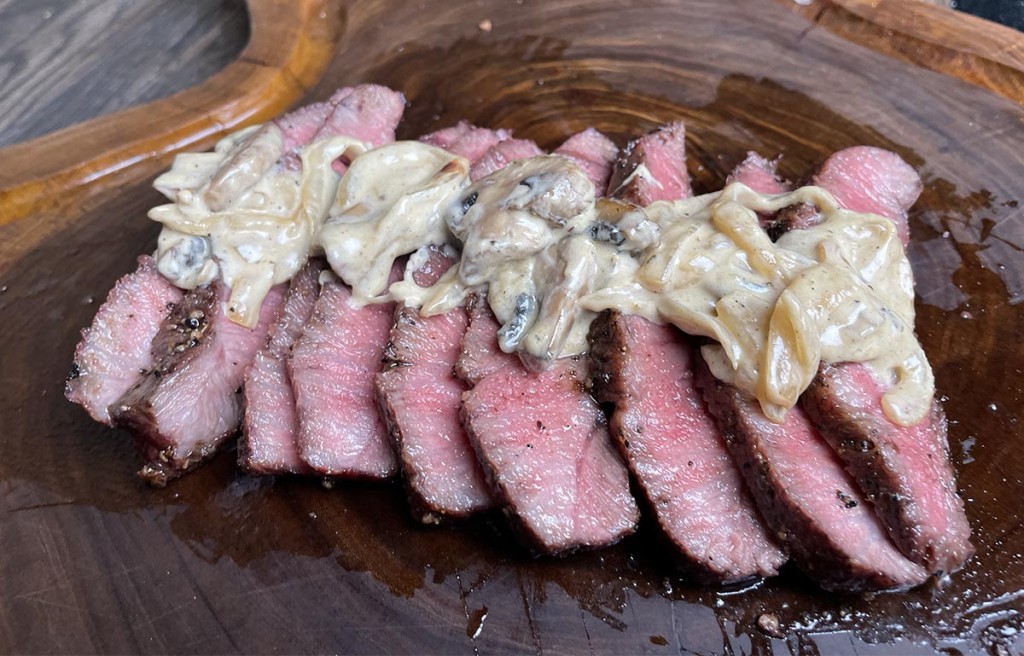
The flat iron is easily one of the most underrated steaks for grilling. But don’t discount it because it’s the second-most tender beef cut behind the tenderloin. A more affordable alternative to strip steak, it blends good marbling with a leaner cut to create a flavorful steak.
Fun fact: Flat iron is a relatively “new” cut created by food scientists in 2002. The traditional cut included a thick vein of connective tissue, so scientists cut around it, similar to filleting a fish, to create the flat iron steak.
Where it comes from
The flat iron comes from the chuck primal section of a steer’s front shoulder area. This gives the boneless cut its rich, beefy flavor.
How to grill it
The flat iron’s marbling and tenderness mean it’s made for grilling at high heat. Keep it at medium rare if possible, as any higher than medium, and it dries out quickly.
Let the beef flavor shine through with simple SPG (salt pepper and garlic) seasoning, and top with a creamy mushroom sauce.
8) Flank Steak
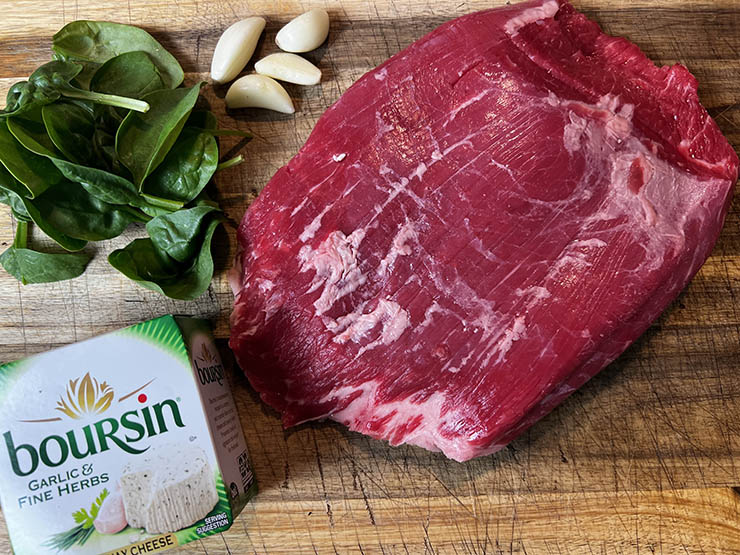
Flank steak is a close neighbor of Bavette steak and is often confused with skirt steak. But these are three separate steak cuts.
The flank steak itself is a very lean cut with minimal fat and a robust beef flavor. Fortunately, it’s tender enough to cook it hot and fast on the grill.
Where it comes from
The flank comes from the steer’s abdomen near the rear legs. Naturally, it gets a lot of use during a cow’s life as it’s from the muscle group used when the cow twists and walks.
How to grill it
Because it’s so lean and cut from a hard-working muscle, flank steak can be tough if not prepared properly. Luckily, we have two recipes to follow for optimal results.
One of the most popular ways to use flank steak is in grilled carne asada. We use a cilantro-lime marinade for this recipe before grilling quickly over hot charcoal. When you grill marinated meat over charcoal, some of that juice hits the coals, making extra smoke that infuses the meat with more flavor.
Another great recipe using flank steak is grilled steak pinwheels. The flank steak is stuffed with cream cheese, baby spinach, and mozzarella cheese and grilled to medium rare.
Just remember to not go past medium rare and to cut against the grain before serving for maximum tenderness. The pronounced muscle fibers make this easy.
9) Chuck Eye Steak
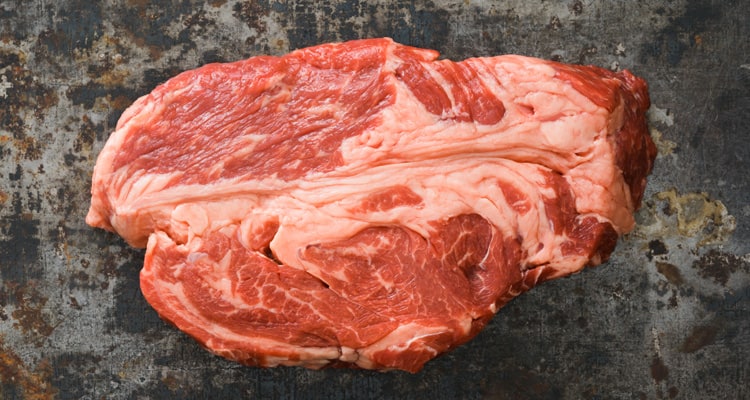
Would you believe it if we told you the chuck eye is nicknamed the “poor man’s ribeye?” While it might be more affordable than the ribeye, there’s nothing cheap about the rich flavor and tender texture.
You don’t have to take our word for it. There are only two chuck eye steaks per steer, so butchers often snap them up themselves before putting them on display because they’re that good.
Where it comes from
The chuck eye is cut from the chuck primal and the 5th rib, right next door to the ribeye. The chuck primal is located in a steer’s shoulder and neck region, so it gets a good workout over its lifetime.
The chuck eye combines the longissimus dorsi muscle (what makes a ribeye so tender) with a chuck’s deep flavor. It’s the best of both worlds.
How to grill it
One of our favorite things about the chuck eye steak is that you can cook it hot and fast on the grill, and it won’t lose that juiciness and tender texture—unless you go over medium, that is. Use the reverse sear method on any grill, and you’ll be set.
Head to Porter Road to pick up a dry-aged chuck eye steak.
10) Delmonico Steak
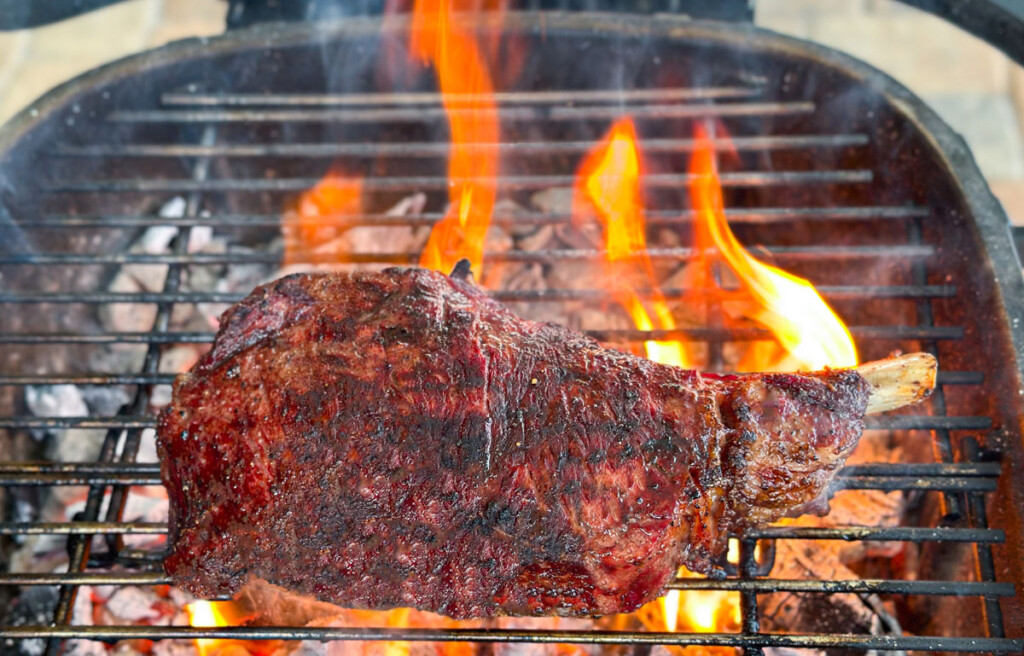
Delmonico Steak’s namesake restaurant in New York City made the cut famous in the mid-19th century.
It’s a bone-in or boneless thick cut between two and three inches, so it’s made for feeding a hungry family.
It also shares characteristics with both the ribeye and New York Strip. A Delmonico steak is leaner than a ribeye but not as tender. It’s also typically less expensive, with fantastic marbling and an intense meaty flavor. Sounds like it’s worth a try, right?
Where it comes from
Delmonico is cut from the loin section where the ribeye ends and the New York Strip begins. Only two are available on each steer (one on each side), making it extra unique.
How to grill it
Because the steak is so thick, reverse searing is the only way to grill a Delmonico steak. Otherwise, if you only grill over direct heat, you’ll get a burnt steak with an undercooked middle.
We use salt and pepper and a charcoal grill. Remember to factor in a longer cooking time as well (we promise it’s worth it).
Wrapping it up
Now you know the best steaks for grilling, it’s time to pick a recipe and get started. If you need to stockup first, check out our list of the best places to buy steak online.



